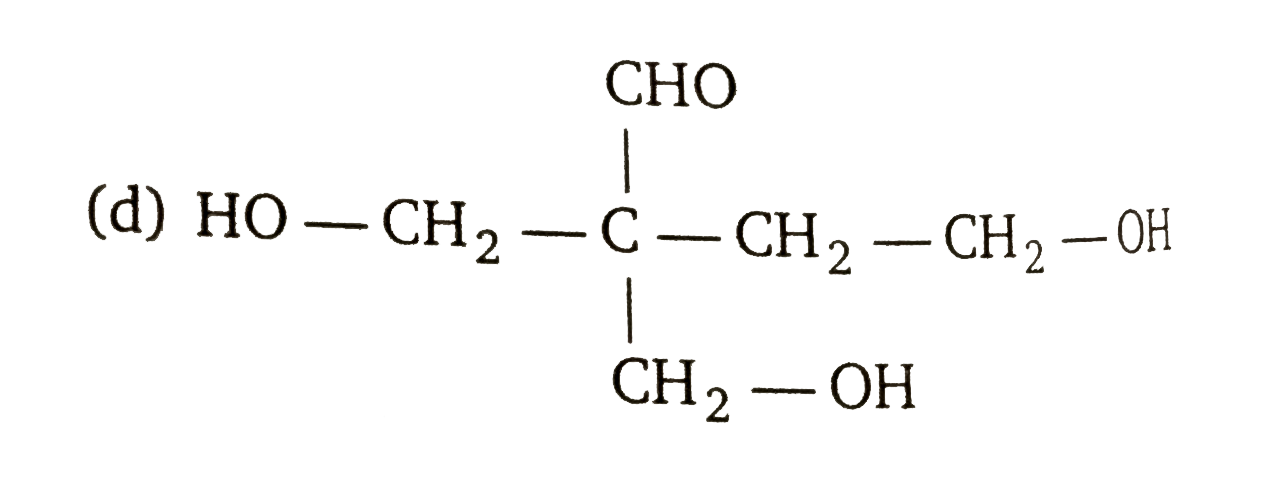CH3−OH∣CH−CH2−O∣∣C−HHO−−−−−−−−−−−→(Reduction aldol)(A),3HCHO+ANa2CO3−−−−→40∘CB(82%)
Product (B) of the above reaction is:
A

B

C

D

Video Solution
Text Solution
The correct Answer is:C
|
Topper's Solved these Questions
- ALDOL AND CANNIZARO REACTIONBook:MS CHOUHANChapter:ALDOL AND CANNIZARO REACTIONExercise:Level 1 (Q.1 To Q.30)
Explore 6 Videos
- ALDOL AND CANNIZARO REACTIONBook:MS CHOUHANChapter:ALDOL AND CANNIZARO REACTIONExercise:Level 1 (Q.31 To Q.48)
Explore 3 Videos
- ALDEHYDES AND KETONES II. ALDOL REACTIONS Book:MS CHOUHANChapter:ALDEHYDES AND KETONES II. ALDOL REACTIONS Exercise:ADDITIONAL OBJECTIVE QUESTIONS (LINKED COMPREHENSION TYPE )
Explore 6 Videos
- ALKENES AND ALKYNES IIBook:MS CHOUHANChapter:ALKENES AND ALKYNES IIExercise:ADDITIONAL OBJECTIVE QUESTIONS (Matrix Match Type)
Explore 2 Videos
Similar Questions
Knowledge Check
CH3−OH∣CH−O∣∣C−CH2−CH3 will respond to
Aonly Fehling solutionBOnly Tollen's reagentCBoth Tollen's reagent and Fehling solutionDnone of theseCH3−O∣∣C−CH3 and CH3−O∣∣C−H is differentiated by:
AiodoformBNaHSO3C2,4-DNPDnon of theseThe IUPAC name for
CH3−O∣∣C−CH2−CH2−O∣∣C−OH is :A1-Hydroxypentane-1, 4-dioneB1, 4-DioxopentanolC1-Carboxybutan-3-oneD4-Oxopentanoic acid
CH3−O∣∣C−CH2−CH2−O∣∣C−CH3(NH4)2CO3−−−−−−−→Δ(A)CCl3CO2Na−−−−−−−→Δ(B)(major)
Product (B) of above reaction is :
View SolutionPh−O∣∣C−CH3NaNO2−−−−−→HCl(A)AC2O−−−−−→heat(B)H3O+−−−→(C)
Product (C) of the above reaction is :
View SolutionCH3−O∣∣C−H and CH3−O∣∣C−CH3 is differentiated by :
View SolutionCH3−O∣∣C−C2H5 & CH3−O∣∣C-

cannot be distinguished by
View SolutionIUPAC name of the compound
CH3−O∣∣C−CH2−OH∣CH−CHO
View Solution


